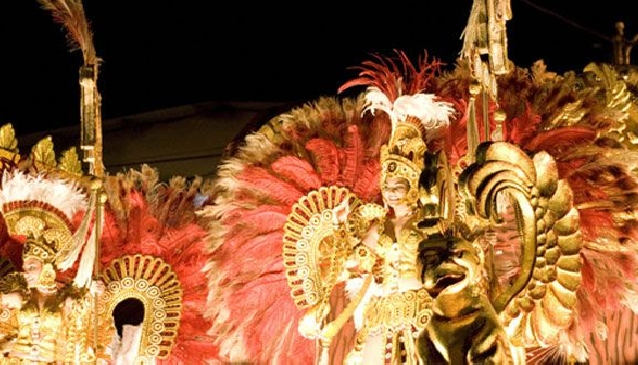Four days of tradition, culture, party, and fun in Panama

Some say the first carnival celebrated in Panama occurred during colonial times, when large groups of people would dress up as kings and queens, soldiers, slaves and Indians. Beginning at the Avenida Balboa, battles would be simulated all the way along to what is now known as Santana. However, despite these beliefs, it wasn’t until 1910 that the mayor of Panama, José Agustín Arango, formalized carnivals. A queen was necessary to lead the celebrations, and it was the ‘Club Unión’ (the most prestigious club in Panama) who approved Manuelita Vallarino as the first sovereign. Year after year the Club Union’s Queen would join the carnivals at a time when street parades, festivals and dances reigned in Panama City.
Over time Panama’s carnival traditions and celebrations have changed drastically; however, the custom of having a Queen present has always prevailed. Today, celebrations usually start about 40 days prior to the Christian holy week and last for 5 entire days, starting on a Friday night and culminating on a Tuesday, prior to Ash Wednesday. Each night is characterized by a specific event; Friday is the day the queen is crowned; Saturday is the night she wears her main costume and Sunday is the celebration of the coronation. Monday is the most luxurious day where the queen gets to wear her gala costume and Tuesday marks the end of the festivities with a typical Panamanian celebration involving the Queen wearing national dress inspired by a national topic such as literature, flora, fauna, or indigenous mythology.
Today, carnivals are still celebrated throughout the entire country. However, there are a few specific places in Panama where these celebrations are on a whole different level. The most famous ones are the carnivals of Las Tablas and Villa de los Santos, both in los Santos province; followed by the carnivals of Penonomé, province of Coclé; and Ocú and Chitré, in the province of Herrera.
The most exciting aspect of these carnivals is that they are an on-going celebration for four entire days. From early in the morning until early in the afternoon, the ‘mojaderas’ and ‘culecos’ will keep you refreshed from the intense tropical heat. ‘Mojaderas’ involves getting soaked, as large water trucks hit the streets and spray refreshing clean water into the crowd. This might sound strange, but you will just have to attend to a Panamanian carnival to understand how fun it is. In fact, without ‘mojaderas’ and culecos’, Panama’s outdoor carnivals would not be the same.
In the afternoons you can enjoy countless parades featuring different queens wearing extravagant and luxurious costumes, all competing for the prize of the best float and costume. At night, entire avenues transform into dance floors where people can enjoy popular music and party the night away until the early hours in the morning; and as soon as the sun rises the next day, the party starts all over again. Although it leaves you with little time to rest, I can assure you that Panama’s carnivals are a unique experience that will leave you a lifetime of memories.